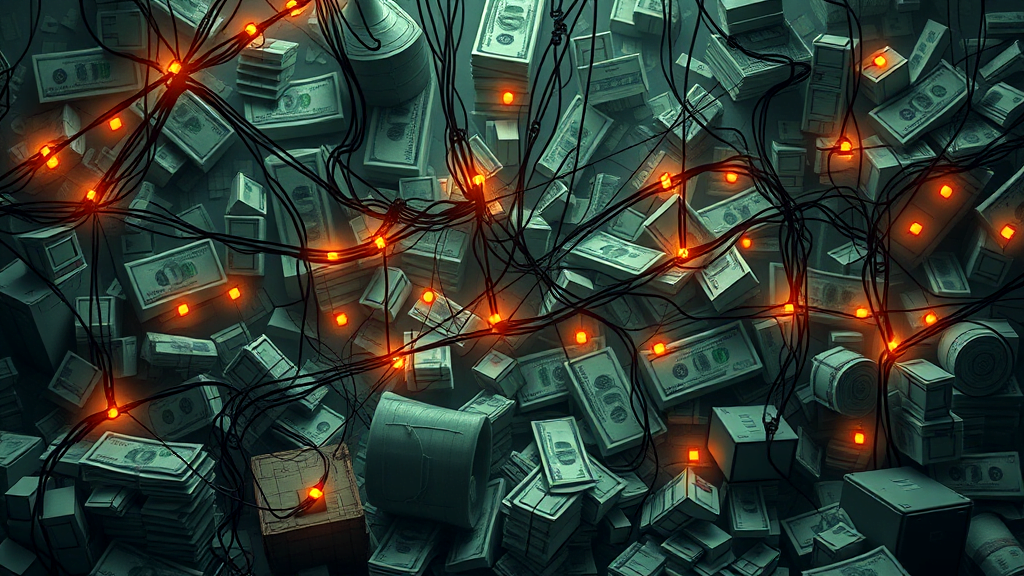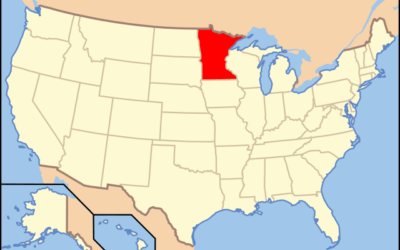Delaware Incarceration Facts
Delaware’s mass incarceration is a pressing issue with high incarceration rates. The state sees 539 out of every 100,000 residents behind bars. This puts Delaware among the top in the nation for statewide incarceration rates. Over 5,400 Delaware residents are incarcerated, with many more on probation. The problem extends beyond numbers. Prison gerrymandering and the unjust allocation of resources affect the community. Racial justice concerns are significant, as Black residents face state prisons at disproportionate rates. The Sentencing Project highlights these systemic issues, pushing for redistricting data changes. Addressing healthcare needs for incarcerated people, including e-message fees, is crucial. Understanding these facts helps us grasp the challenges facing Delaware incarcerated people today.

Understanding Delaware’s Incarceration Rates
Peeking at Delaware’s incarceration dynamics, mass incarceration presents a stark reality. With 539 residents per 100,000 behind bars, Delaware’s numbers are a tall tale of confinement. The statewide incarceration rate reflects a broader national trend, capturing the essence of punitive measures. Delaware residents face challenges beyond bars, with prison gerrymandering skewing representation. Racial justice remains a crucial focus as Black residents encounter disparities. Insights from the Sentencing Project and redistricting data reveal systemic layers. Addressing these issues and ensuring fair treatment for incarcerated people is a priority for community stability.
Growth in Statewide Incarceration Rates
Delaware’s escalating incarceration trends echo a nationwide shift towards mass incarceration. With 539 of every 100,000 residents locked up, Delaware stands out in this regard. Such high incarceration rates burden communities, impacting social and economic stability. Many incarcerated people face challenges beyond confinement, including inadequate healthcare. Prison gerrymandering further complicates representation, as highlighted in Delaware’s redistricting data source. The Sentencing Project underscores the urgency for reform, spotlighting racial disparities and systemic issues. Delaware residents endure these hardships, urging a reevaluation of the state’s approach to correctional control.
Delaware’s Position in Global Incarceration
Delaware’s mass incarceration issues are highlighted by its incarceration rates surpassing many democratic nations. The state imprisons 539 individuals per 100,000, showing a reliance on confinement. Challenges extend to Delaware residents with racial disparities in prisons and significant effects on communities. Prison gerrymandering efforts illustrate systemic problems. Initiatives like the Sentencing Project advocate for reform, emphasizing the need for accurate redistricting data. For instance, the National Institute of Justice discusses the impact on children, shedding light on broader societal effects.

Racial Disparities in Delaware Prisons
Racial disparities in Delaware’s prisons are stark. Black residents face incarceration rates much higher than white peers. This imbalance highlights systemic issues in the justice system. Delaware’s mass incarceration problem underscores this divide, impacting community trust and social fabric. Incarceration rates dramatically illustrate the need for reform. Delaware residents endure these challenges, fueling calls for change. Efforts to address prison gerrymandering and adjust redistricting data aim to tackle these disparities. The Sentencing Project provides critical insights and pushes for systemic reforms. Addressing these issues is crucial for progress.
Impact of Prison Gerrymandering
The twists of gerrymandering in Delaware affect more than just political lines. With 80% of inmates reallocated to their home areas during redistricting, this move aims to paint a truer picture of community dynamics. This adjustment offers a glimpse into the real impact on communities, particularly those already grappling with high incarceration rates. The Sentencing Project sheds light on these issues, advocating for fair representation and systemic reform. Such efforts aim to untangle the web of prison gerrymandering, providing equitable solutions for all affected.
Delaware’s incarceration situation is like a knot in a string, pulling tight on every aspect of community life. Imagine living in a state where one out of every 200 people is behind bars. That’s a hard pill to swallow, isn’t it? These numbers are more than just statistics; they’re stories of families, of communities disrupted. The issue extends beyond the concrete walls of prison. Families struggle to maintain connections, children miss out on having a parent at home, and entire neighborhoods feel the ripple effects. It’s like throwing a stone into a pond—the waves reach far and wide. One can’t help but wonder how these families cope with the absence and the stigma. And, of course, the financial burden is heavy, too, with costs for prison visits, phone calls, and other expenses piling up.
Effects on Delaware Residents
The impact on Delaware folks from Delaware Massincarceration is significant. Communities, particularly where there are more incarcerated people, face tough times. Social ties weaken, and the economy takes a hit. Families endure stress, and the cycle of poverty feels never-ending. State prisons contribute to these challenges, making daily life more complex.
Prison gerrymandering, while addressed, still influences representation and fairness. According to ScienceDirect, these issues ripple through communities. Understanding the effects helps in crafting better policies for everyone involved.
Community Insights: High vs. Low Incarceration Areas
In examining areas with varying incarceration levels, Delaware Massincarceration affects communities deeply. Areas with many incarcerated people endure more poverty and educational hurdles, while unemployment compounds these challenges. This cycle can trap individuals, impacting families and whole neighborhoods. State prisons, pivotal in these dynamics, often extend their influence beyond bars. Meanwhile, redistricting data attempts to provide clarity, though representation complexities remain. Understanding these issues helps identify solutions and opportunities for positive change. Ending the cycle of disadvantage requires a community effort, where everyone has a role to play.
Delaware’s incarceration rates paint a picture of a community grappling with deep-rooted issues. When you think about it, having over 5,400 people behind bars isn’t just a number—it’s a staggering reality that reshapes lives and local landscapes. Imagine a neighborhood where every few blocks, someone’s missing because they’re locked up. Schools notice absences, workplaces feel the strain of missing employees, and children grow up with unanswered questions. These are not isolated events but interconnected challenges that weave through the community’s fabric. It’s like trying to bake bread without enough yeast; the outcome never rises to its full potential, and everyone feels the lack.
Racial disparities, particularly affecting Black residents, add another layer of complexity to Delaware’s incarceration dilemma.
Health Challenges for Incarcerated Individuals
Navigating care needs in Delaware state prisons presents unique obstacles. Many incarcerated people face unmet healthcare demands. This is compounded by systemic issues like charging for e-messages and replacing personal mail with scans. Such policies can hinder communication, impacting well-being. The redistricting data reveals the disproportionate effects on specific communities, affecting access to resources. High incarceration rates compound these challenges, straining an already stretched system. Addressing these issues requires innovative approaches to ensure fair treatment and access to necessary care for all.

Delaware’s Criminal Justice System Components
Delaware’s criminal justice framework comprises many layers beyond mere incarceration. State prisons form a critical part, housing thousands of individuals. Yet, the system also includes probation, parole, and other correctional elements. Through redistricting data, Delaware attempts to address community representation, though complexities persist. The system’s impact is profound, affecting social ties and economic stability. Addressing these challenges involves rethinking policies and practices that contribute to Delaware Massincarceration. Transformative change requires a community effort, focusing on fair representation, access to resources, and a reduction in systemic disparities.
Sentencing Project and Redistricting Data
The insights from projects focused on sentencing and redistricting reveal a complex picture of Delaware Massincarceration. This data suggests significant disparities and offers recommendations to tackle these challenges head-on. By reallocating a portion of incarcerated people to their home communities, Delaware attempts to improve representation accuracy. This strategy aims to address systemic imbalances while fostering fairer community representation. However, racial and social dynamics remain deeply intertwined, complicating efforts for reform. Understanding these elements is crucial for developing effective solutions and ensuring equitable treatment for all individuals in the justice system.
The Financial Impact on Delaware’s Economy
The economic toll on Delaware is staggering, given the state’s heavy reliance on imprisonment. The cost of housing so many prisoners drains resources that could otherwise boost community programs or education. Also, it limits opportunities for the families of those incarcerated, leading to wider financial instability. Many incarcerated people face barriers to reintegration, affecting workforce participation. This situation creates a ripple effect, pushing communities towards poverty. Addressing these financial strains is crucial for long-term economic stability and growth.

Comparing Delaware with Other States and Countries
Measuring Delaware against other states and nations, its massincarceration issue stands out. With 539 per 100,000 people locked up, Delaware’s numbers exceed most democratic countries. This isn’t merely numbers; it shapes communities and lives. Racial disparities show Black residents jailed more often, a glaring gap in justice. Moreover, the financial burden on Delaware is immense, affecting public funds and economic growth. The situation demands urgent reforms, especially considering the human costs. Addressing these issues involves systemic changes, aiming for fairness and equality across all communities.
The Role of Racial Justice Initiatives
Addressing disparities in Delaware’s justice system through racial justice efforts is essential. These initiatives aim to rectify inequality and support communities impacted by Delaware Massincarceration. They advocate for policy reform, focusing on equitable sentencing and improving rehabilitation programs. Such efforts highlight the importance of community engagement and support, aiming to dismantle systemic barriers. By fostering dialogue and cooperation, these initiatives can drive meaningful change. The goal is not just to reform, but to rebuild trust and offer opportunities for incarcerated people, ensuring a fairer, more just system for all.
Resources for Staying Informed on Delaware’s System
Keeping updated on Delaware’s system involves diving into various essential resources. The Delaware Massincarceration issue is crucial. Explore local reports highlighting disparities, systemic challenges, and community impacts. The Sentencing Project provides insightful data addressing these systemic issues. Engage with local advocacy groups focusing on reform and racial justice. They offer valuable perspectives on policy changes and community needs. Also, stay informed through local news outlets covering justice system developments. Use these tools to grasp the intricacies and consequences of Delaware’s policies, ensuring a well-rounded understanding.




0 Comments